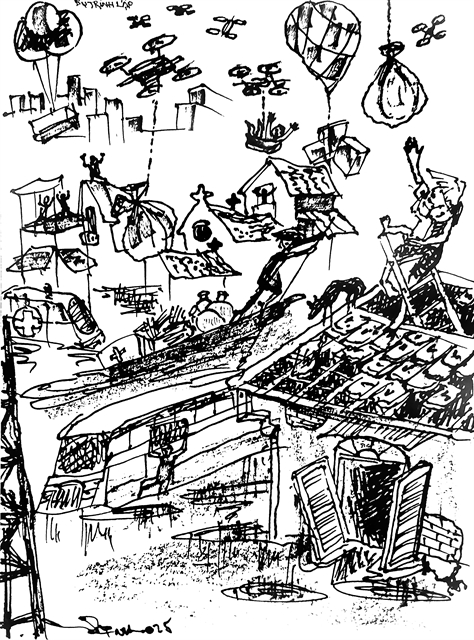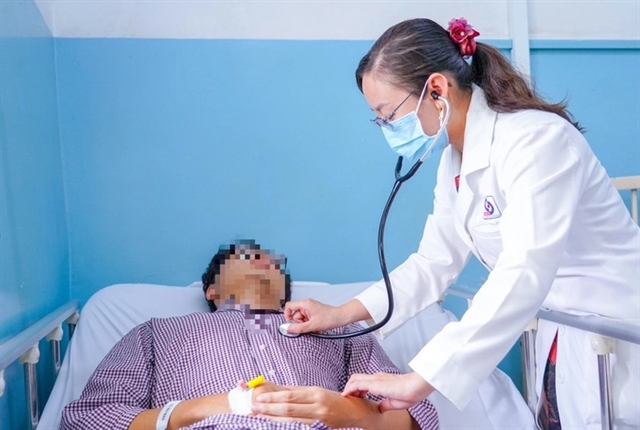 Talk Around Town
Talk Around Town

 |
| Illustration by Trịnh Lập |
Nguyễn Mỹ Hà
The recent continuous hits of tropical typhoons to Việt Nam, as always, have again revealed the people's resilience, camaraderie and fellowship displayed.
When floods in the Cầu River rose and threatened dykes, thousands of local people, most of them young, were ready to spend the night by them, adding sandbags and being ready at communal call if needed.
Upon seeing Prime Minister Phạm Minh Chính at the dyke, where raging water threatened to break through and endanger millions of people, so-called keyboard heroes asked why he risked being there at all.
But of course, his presence was not just to protect the dyke, but to personally encourage the people, offer support, and inspire solidarity among many others.
The spontaneous response of the people across the country has been timely and effective. The show of camaraderie online has been enormous whenever such catastrophic circumstances arise.
But how do we prepare for survival if we have to be displaced and self-sustained until we receive any forms of help?
If you look up the website of the Central Steering Committee for National Disaster Prevention and Control, it is not easy to find guidance for the average citizen on what to do if they live in a flood-prone area.
I was hoping to see an actual digital map of flooded locations, where people can mark themselves safe or note that the flood is going on or has receded. I was hoping to find a 10-point checklist of things to do if a typhoon is going to hit my region.
The website, however, is simply dull, unlike the activities of online calls for help from people in far-flung provinces who are ready to put their daily business on hold for a few days, pack up and get on a truck heading north to the provinces of Thái Nguyên, Bắc Ninh or Cao Bằng.
Though the actual meeting of the country's top leaders to react to the typhoon was not for the public to see, each fanpage of climate influencers -- such as a Vietnamese climate expert working in Japan -- became highly coordinated, as they devised effective action plans that were quickly implemented to deliver essential food to stranded people.
For a catastrophic disaster of this scale, it seems that we are never prepared enough. But as a country that receives a dozen tropical storms each year, we should be better able to provide preventive measures ahead of time.
Many Vietnamese people I know do not have a pick-up bag of essentials including documents, clothes and money. It's also perhaps our superstition not to think of negative outcomes or prepare for the worst, and yet sometimes it does come.
In every storm or its aftermath, the army and police are the first to be deployed for help. As in the army, each soldier has his or her own bag of survival necessities. We can just follow that list to get ourselves ready according to our capacity and availability.
For someone who trains for survival conditions where they may have to get ready for survival -- such as marathoners, jungle runners, or forest trekkers -- their understanding of conditions and getting ready to cope is definitely ahead of the rest of us. But everyone can play their part, and people in their prime can help those such as the elderly and children.
To prepare for a community of households to get back to normal after a flood, they really need guidance from people who are not affected. Advice can be found online, but it's not systematic or well linked to other networks or support systems.
In addition, people struck by calamities may be too overwhelmed or panicked, unable to think rationally or find simple and effective solutions.
My eyes welled up when I read that at least one person owning a rice shop had all his grain soaked through in floodwater and lost his fortune.
With scientific advancements these days, we think we can predict the weather fully. We cannot. Mother Nature always has her way of staying ahead of us, all we can do is try our best to adapt. VNS




